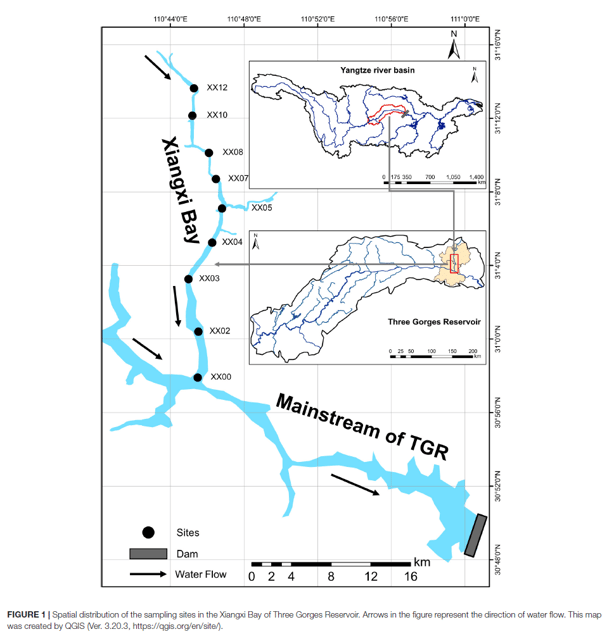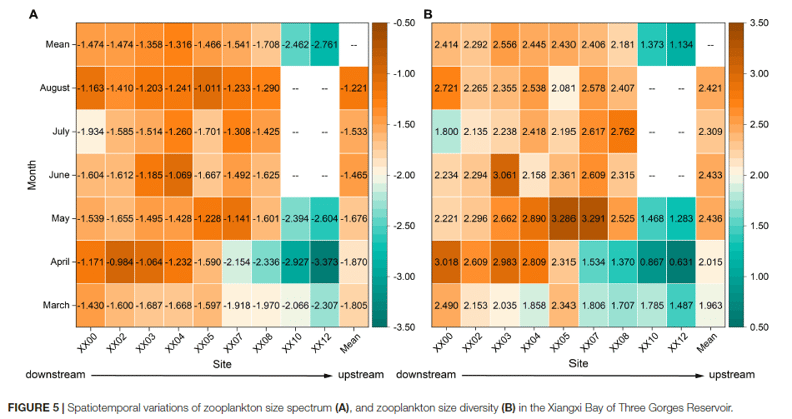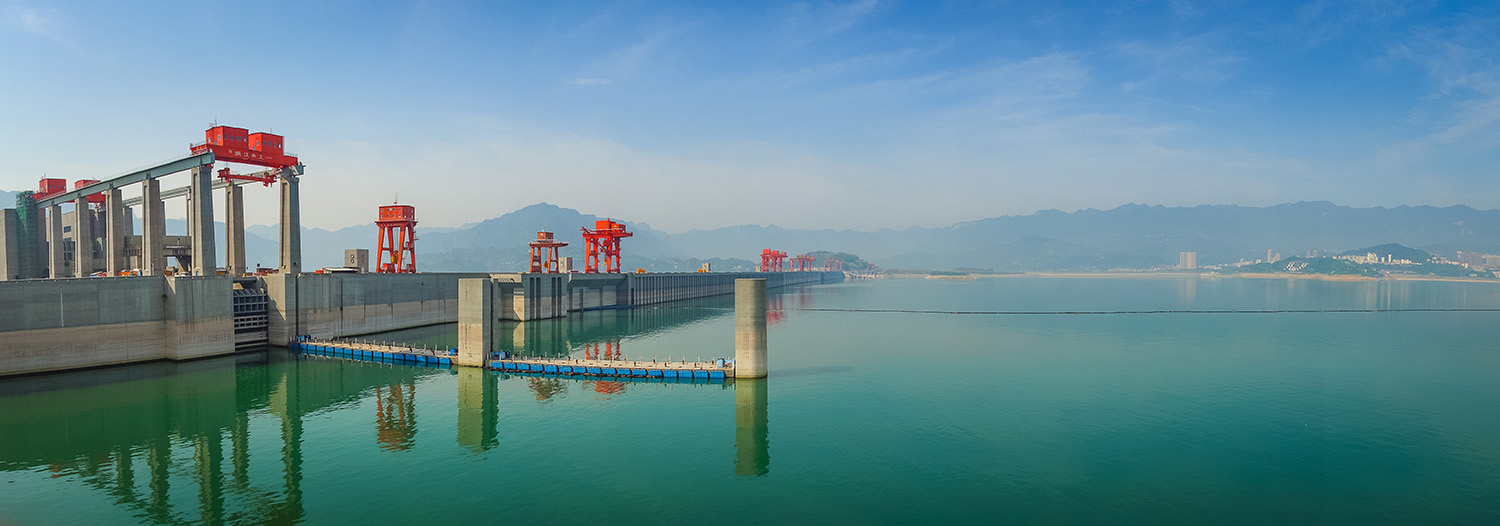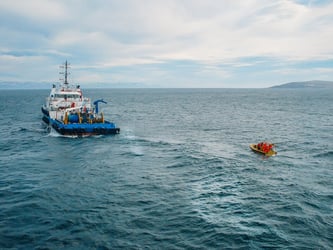Zooplankton are an essential part of the aquatic food web. They are the thread that connects the primary producers (phytoplankton) to high trophic organisms, and due to their small size are easily affected by changes in their environment. This makes them a good indicator of water quality and the effects of climate change on the health of water systems.
The Xiangxi Bay of the Three Gorges Reservoir in the Yichang region of China recently served as a place to observe these effects. The bay exhibits high spatial heterogeneity (or an uneven concentration of zooplankton species between different areas of the reservoir). It is this characteristic, likely resulting from variable nutrient levels, that made it a good place to study differences in zooplankton size spectrum and diversity as they relate to environmental factors.
In their paper, "Zooplankton Size Structure in Relation to Environmental Factors in the Xiangxi Bay of Three Gorges Reservoir, China", researchers Haoran Li, et al. reference previous studies that have shown global warming and nutrient eutrophication to have an impact on zooplankton size structure. Warmer waters benefit smaller zooplankton, whereas nutrient enrichment caused by runoff (eutrophication) increases the presence of larger zooplankton. Li et al. hypothesize that nutrient levels affect zooplankton size indirectly by altering the trophic web and affecting the availability of their food source (phytoplankton) and that warmer waters will reduce size diversity.
Throughout spring and summer of 2014, Li et al. took samples from Xiangxi Bay, a section of the reservoir previously shown to be suffering problems from eutrophication. They found the bay to have clear nitrogen and phosphorus gradients where nitrogen levels were higher downstream, and phosphorus levels were higher upstream.

Collected water samples were run on FlowCam, and the resulting images were analyzed using FlowCam's standard method to obtain biovolume and abundance measurements. All resulting particles were sorted into groups including: rotifer, protozoan, cladoceran, copepod, zooplankton egg, and non-zooplankton particle. A total of 74,773 individual zooplankton images were captured by FlowCam in the course of the study.

Common zooplankton species, imaged by FlowCam
Concurrently, measurements were taken of water temperature, dissolved inorganic nitrogen, soluble reactive phosphorus, dissolved silicate, and chlorophyll a. The concentration of chlorophyll a served as an estimate of phytoplankton biomass. A statistical technique called Structural Equation Model (SEM) was then used to investigate the relationship between temperature, nutrient levels, phytoplankton biomass, and zooplankton size structure. A selection of the collected data is shown below.

The researchers concluded that "[nitrogen] had an indirect effect on the zooplankton abundance, size spectrum, and size diversity through affecting the Chl-a, supporting [the] hypothesis that nutrient indirectly affects zooplankton size structure via phytoplankton." In addition, they found that while water temperature clearly affected zooplankton size diversity, it did not appear to have an effect on zooplankton abundance or size spectrum. Therefore they determined size diversity to be the most valuable measurement in exploring the relationship between zooplankton and environmental factors in dynamic reservoir ecosystems.












